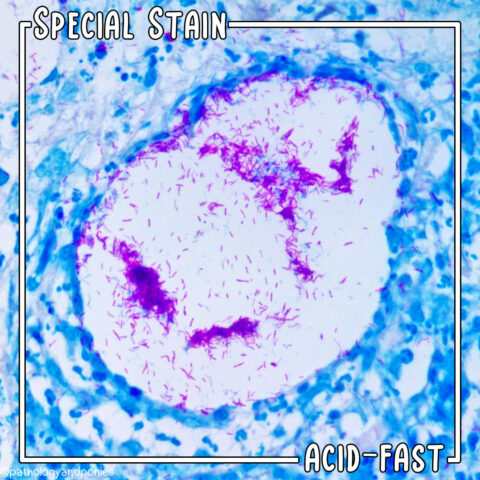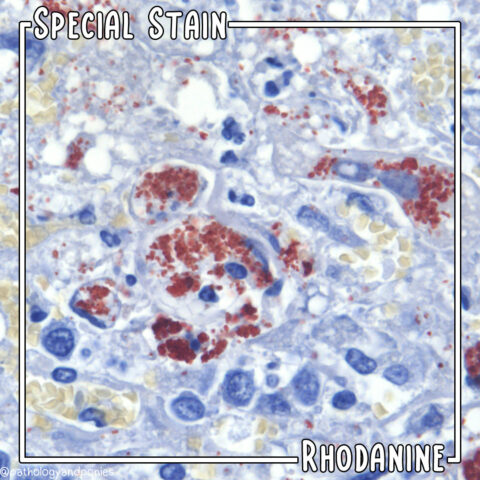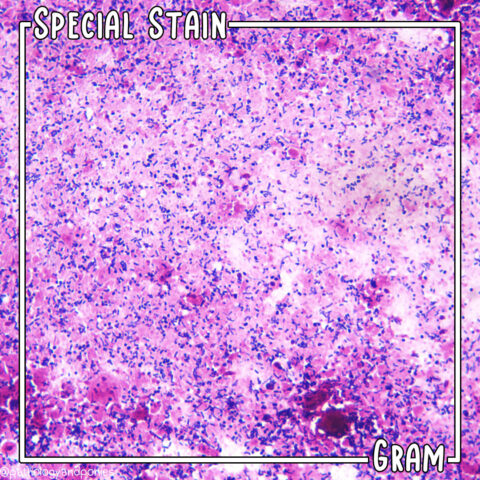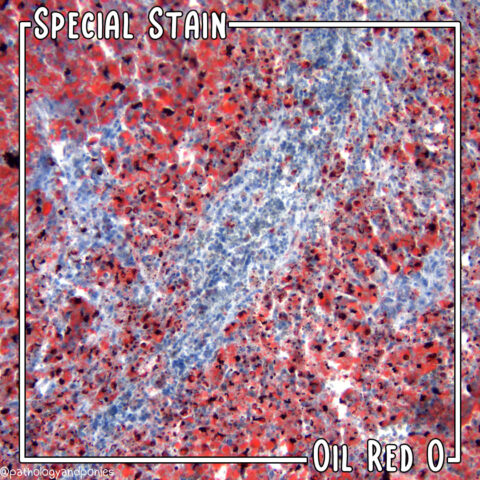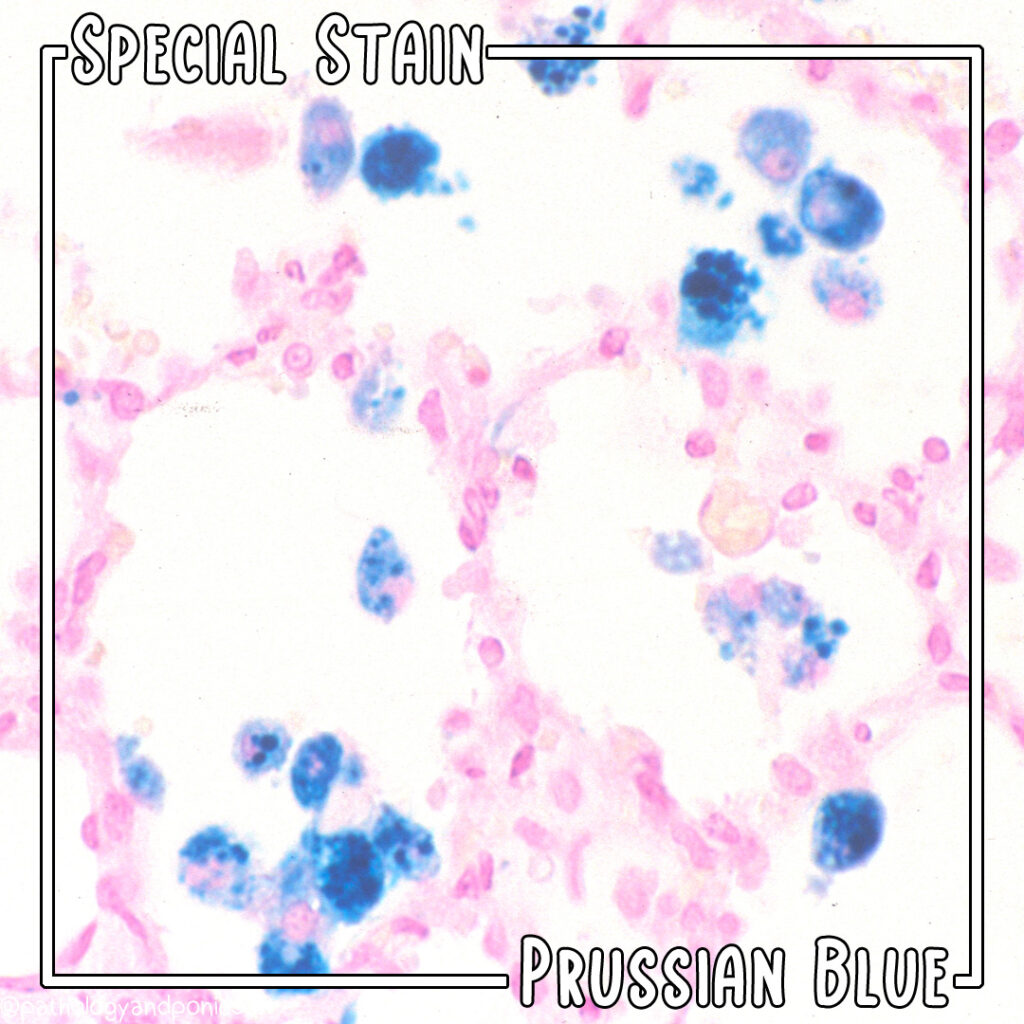
Today’s special stain is 𝐏𝐫𝐮𝐬𝐬𝐢𝐚𝐧 𝐛𝐥𝐮𝐞!
𝐖𝐡𝐚𝐭 𝐢𝐬 𝐚 𝐏𝐫𝐮𝐬𝐬𝐢𝐚𝐧 𝐛𝐥𝐮𝐞 𝐬𝐭𝐚𝐢𝐧?
Prussian blue (or Perl’s stain) is used to highlight 𝐢𝐫𝐨𝐧. On H&E, there are several brown pigments that can look similar, so special stains are needed to distinguish them. We most commonly see iron in the form 𝐡𝐞𝐦𝐨𝐬𝐢𝐝𝐞𝐫𝐢𝐧, which is mainly found within 𝐦𝐚𝐜𝐫𝐨𝐩𝐡𝐚𝐠𝐞𝐬 (the body’s main clean-up cell) as they clean up areas of hemorrhage in tissues.
This image is a case of 𝐡𝐞𝐚𝐫𝐭 𝐟𝐚𝐢𝐥𝐮𝐫𝐞 in a mouse. When the heart fails, blood accumulates in the tiny vessels within the lungs, and occasionally can leak out into the airways. Macrophages come along and clean up this blood, which forms hemosiderin within their cytoplasm. On a Prussian blue stain, these “heart failure cells” can be easily identified by their blue colour!
Photo © Noah’s Arkive contributor Nation licensed under CC BY-SA 4.0.
#veterinarypathology #pathology #veterinarymedicine #vetstudent #pathologyandponies #pathrounds

